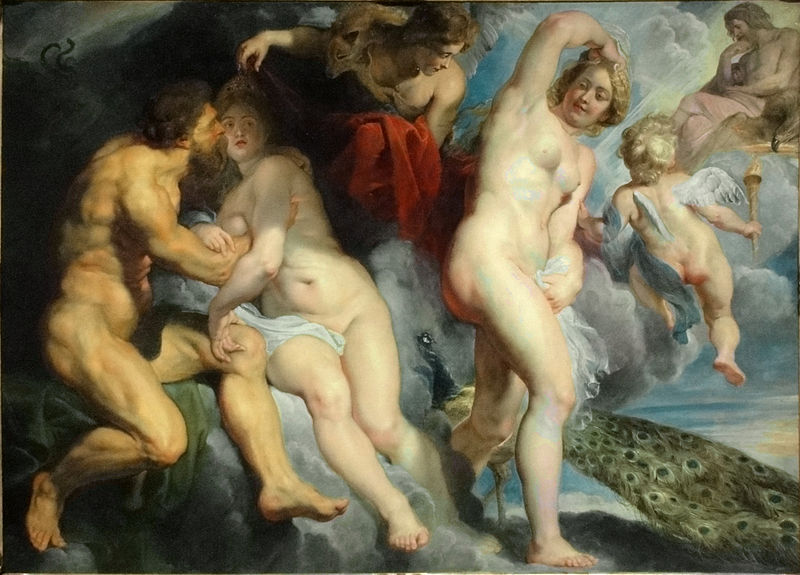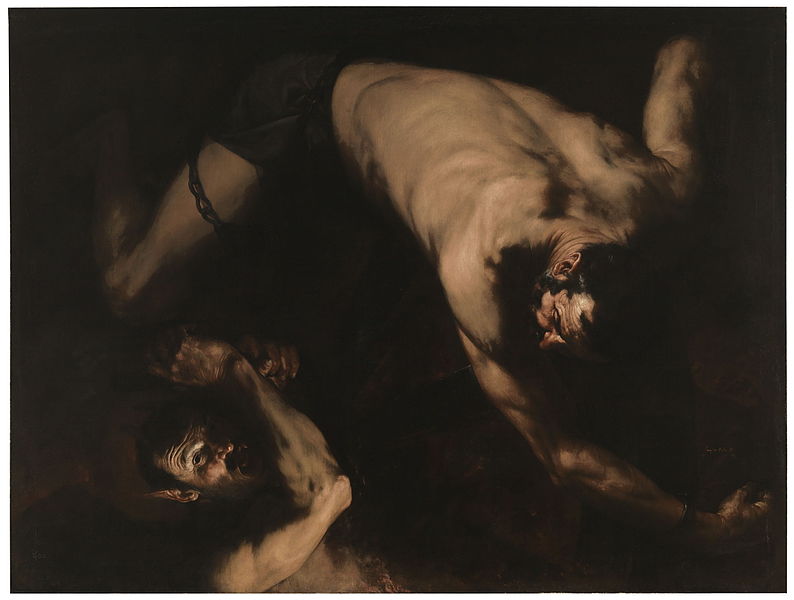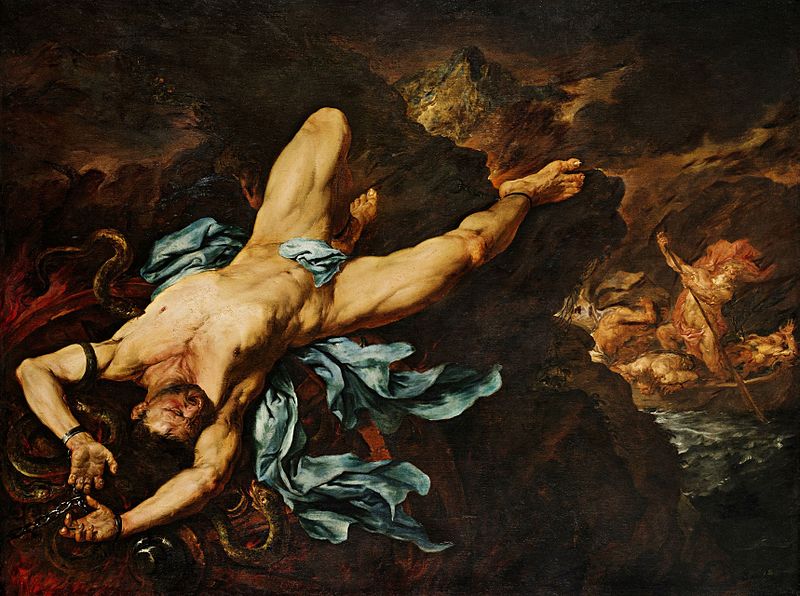Ixion, King of the Lapiths, Deceived by Juno, Who He Wished to Seduce
Ixion, King of the Lapiths, Deceived by Juno, Who He Wished to Seduce - Peter Paul Rubens (1577–1640) - Musée du Louvre
Date: 1615
Medium: Oil on canvas
Dimensions: 175.0 x 245.0 cm
Medium: Oil on canvas
Dimensions: 175.0 x 245.0 cm
|
Ixion, King of the Lapiths, Deceived by Juno, Who He Wished to Seduce is an oil on canvas work undertaken by Peter Paul Rubens depicting an event told of in Greek mythology.
Ixion was the King of the Lapiths, but had been sent into exile when he killed his father-in-law. Zeus took pity on the king, and invited him to Mount Olympus to partaking in a feast. Ixion though abused his host's hospitality, and attempted to seduce Hera, when Zeus found out about this, he sought to test his guest. Zeus crafted a cloud, Nephele, into the form of Hera, and when Ixion sought to seduce her, Zeus decided upon eternal punishment for his guest. More information about Ixion can be found here - (website opens in new window) Peter Paul Rubens |
|
Born: 28 June 1577; Siegen, Germany
Died: 30 May 1640; Antwerp, Belgium
Nationality: Flemish
Art Movement: Baroque
Painting School: Flemish School, Antwerp School
Died: 30 May 1640; Antwerp, Belgium
Nationality: Flemish
Art Movement: Baroque
Painting School: Flemish School, Antwerp School


